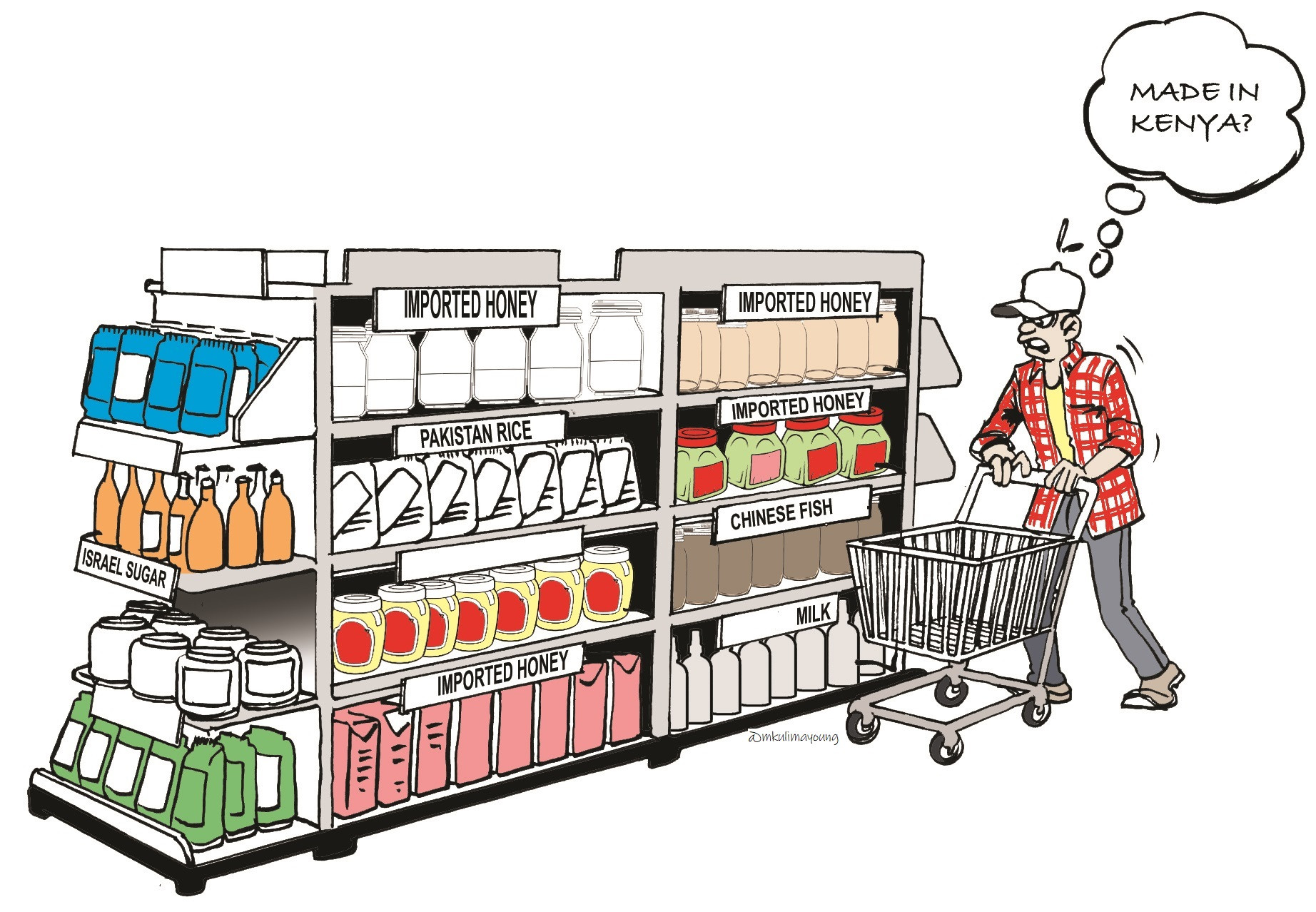Ever wondered why the nicely branded, neatly arranged products displayed at agricultural shows and exhibitions are never found at your favourite supermarket?
Visit Nairobi International Trade Fair, Nane Nane Agricultural Shows across Tanzania, National Agricultural and Trade Show in Jinja, Uganda or the smaller regional shows, exhibitions and farmer field days and you will find plenty of products on display.
The locations are different but the story is the same. They give the impression that farmers are fully engaged and firmly in control of the value addition agenda, and are laughing all the way to the bank. Well, the truth is painful, as they say.
The agriculture sector is replete with many such products and projects that have never made it to the consumer despite heavy investment of resources.
Some are poorly thought ideas by organisations that have no real intention of improving the wellbeing of farmers but avenues for tapping funds, jobs and salaries.
In agriculture development circles, value addition is seen as the missing link in the quest to improve farmers' incomes. Indeed, looking at the value chain, the farmer despite all the effort put in production ends up with the shorter end of the stick.
For its proponents, the assumption is when farmers engage in adding value to their products, they will earn more from their produce, have more money to meet their day-to-day needs, plough back some of the proceeds to sustain and grow their farming enterprises.
However, it's elevated position in development rhetoric does not match action on the ground. It largely remains one of the many catch-phrases used, more so, by ‘knowledge brokers’ to make farming appear attractive.
Value addition has gone beyond the traditional meaning of processing of raw produce to include enhancing value through non-physical characteristics, including branding and designations, for example, selling a product as organic, with a certification label. This is what makes sale of indigenous vegetables lucrative in major towns, especially among health-conscious consumers.
One of the drawbacks to value addition is low understanding among agriculture sector players and lack of a solid framework to guide its practice, including farmers competitive advantage and changing consumer preferences.
Value addition is a deliberate process. However, talk about value addition glosses over the details of what it takes to bring a product to a supermarket shelf and get people to love and buy it. These includes the investment - both technical and financial, time, regulations and logistics.
With rural poverty still high, the food processing sector remains a source for growth of income and employment; to create well-paying jobs for young men and women who are abandoning farming and moving to towns in search of employment opportunities. As to whether this potential will be turned into reality, time will tell.
Keep in mind that any new products and value addition initiatives have to compete with older, bigger and more established brands. A peanut butter from a women group in Migori County has to fight it out with those from companies in Kisumu or Nairobi.
These are realities that emerging agro-processors must consider and determine which comparative advantage will give them an edge over the competition. The other option is to explore partnerships with established entities and negotiate favourable terms.
Agro-processing is not a one-shoe-fits-all prescription; determine whether the processing venture makes economic sense. Agro-processing comes with huge costs; equipment, labour, packaging and electricity, among others, making it difficult to generate enough sales to cover these startup costs.
In addition, value addition may involve entirely new production practices or new skills that may require to be out-sourced or imported from outside the producer group/community setup, resulting in substantial added production costs.
Therefore, assess whether returns from the undertaking are worth the investment risk. It makes sense to sell some produce raw, depending on quantity, location and prevailing market prices. The margins between selling the produce raw and processing before sale may be thin, and not worth the resources and time required.
The failure of many agro-processing ventures among rural communities, especially those steered by not-for-profit organisations and other institutions, is more about understanding the process of value addition from farm production to consumer marketing. The key to success is to determine both sides of the costs equation, that is, input/production vs returns.
You want to be a Mkulima Young Member? Register here
Being a member enables you to sell and/or accessing contacts for buyers seeking products. Also soon you will get regional market trends and prices projection for various agricultural commodities.
You want to be a Mkulima Young Member? Register here
Being a member enables you to sell and/or accessing contacts for buyers seeking products. Also soon you will get regional market trends and prices projection for various agricultural commodities.

